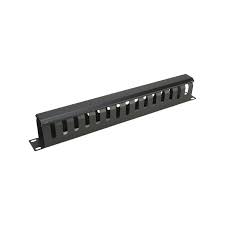Cable management refers to the organization, routing, and securing of cables and wires in a systematic and tidy manner to improve aesthetics, accessibility, and safety in various settings such as offices, data centers, home entertainment systems, and industrial environments. Effective cable management involves several key practices:
1. **Planning:** Before starting any cable management project, it's essential to plan the layout and routing of cables. Consider factors such as the location of power outlets, data connections, and equipment to determine the most efficient cable paths.
2. **Use of Cable Management Tools:** Utilize various cable management tools and accessories to organize and secure cables. This includes cable ties, cable clips, cable trays, cable sleeves, and cable raceways.
3. **Labeling:** Label cables at both ends to easily identify their purpose and destination. This practice simplifies troubleshooting, maintenance, and future expansion of the network or system.
4. **Separation of Cables:** Separate power cables from data cables to minimize electromagnetic interference (EMI) and maintain signal integrity. Use separate cable pathways or barriers where possible to prevent interference.
5. **Routing:** Route cables along designated pathways such as cable trays, conduits, or raceways to keep them organized and protected from damage. Avoid running cables near sources of heat, water, or sharp edges.
6. **Length Management:** Keep cable lengths as short as possible to minimize excess cable clutter. Coil and secure any excess cable length using cable ties or Velcro straps to prevent tangles and tripping hazards.
7. **Vertical and Horizontal Management:** Employ both vertical and horizontal cable management techniques, depending on the layout of the space and the direction of cable runs. Vertical cable management involves organizing cables along racks or cabinets, while horizontal management involves routing cables along floors or ceilings.
8. **Maintenance:** Regularly inspect and maintain cable management systems to ensure cables remain organized and properly secured. Address any issues such as loose cables, damaged insulation, or cable congestion promptly to prevent accidents or disruptions.
9. **Documentation:** Maintain accurate documentation of cable layouts, configurations, and labeling schemes. This documentation serves as a reference for future installations, upgrades, or troubleshooting efforts.
By implementing effective cable management practices, you can create a clean, efficient, and safe environment while optimizing the performance and longevity of your cable infrastructure.
